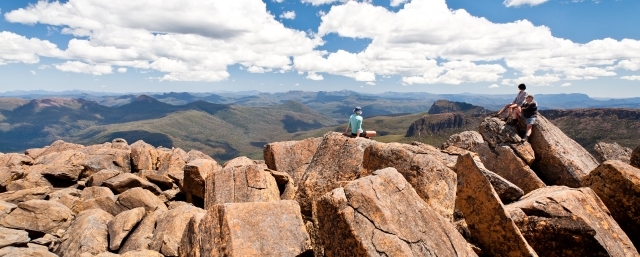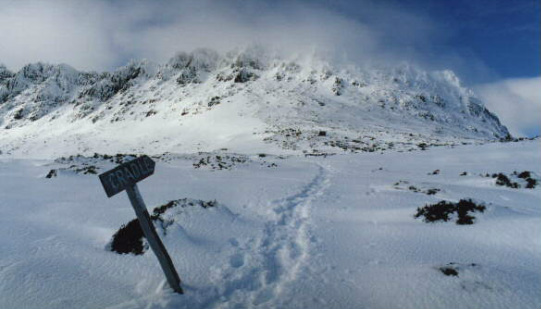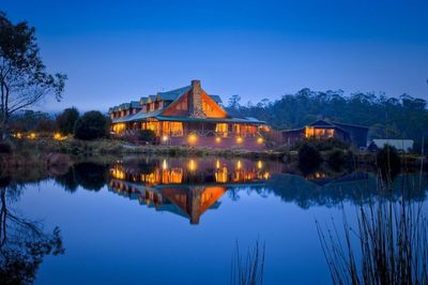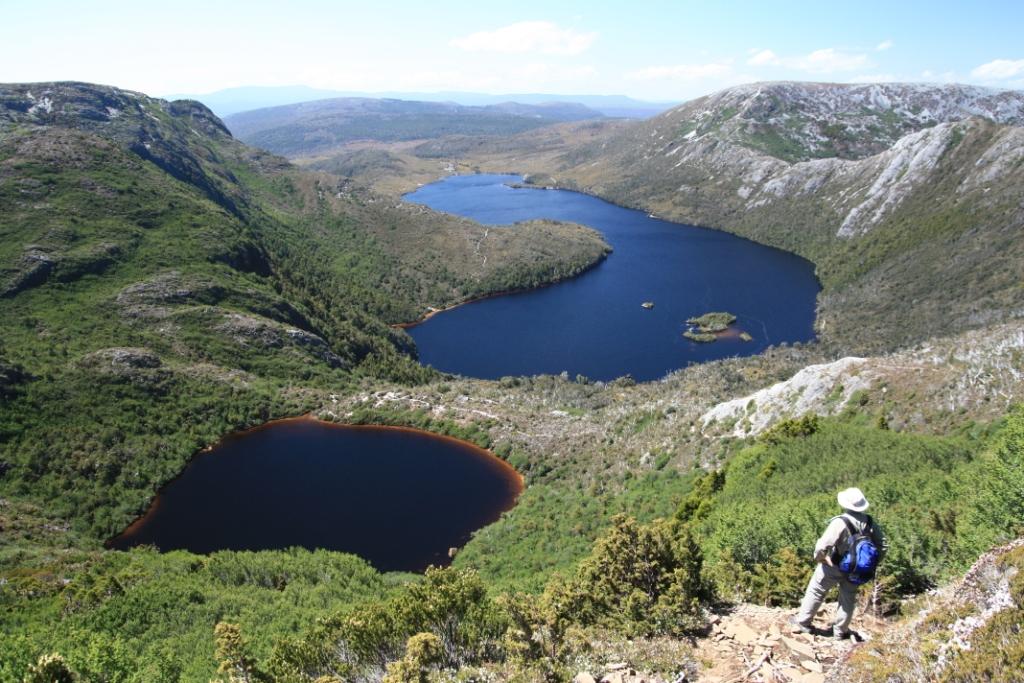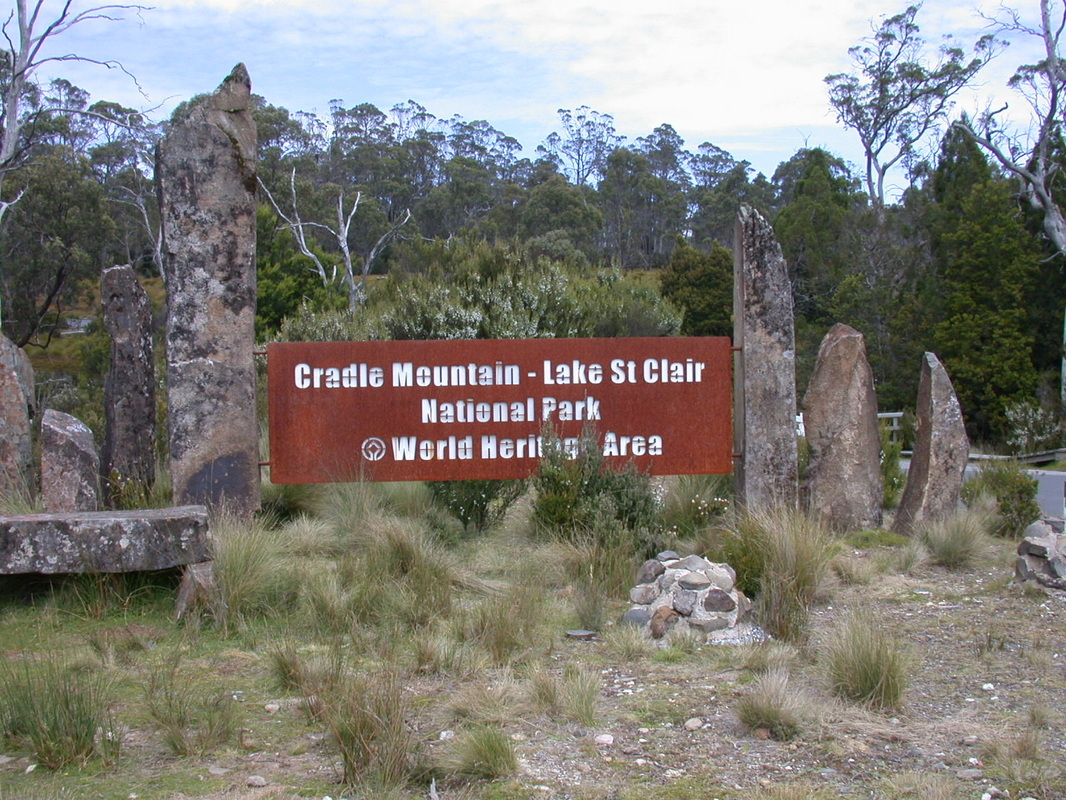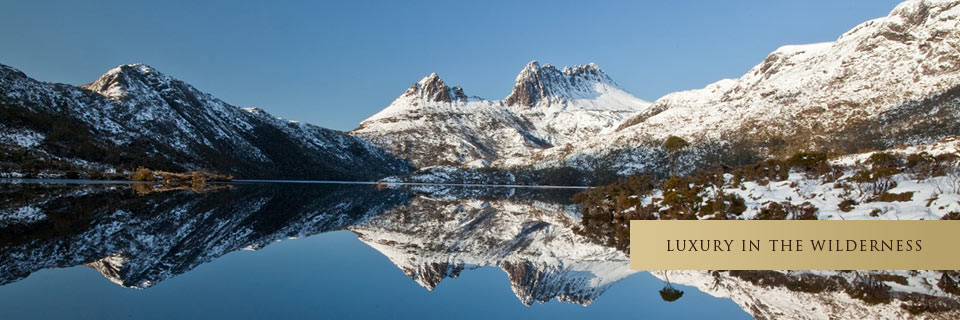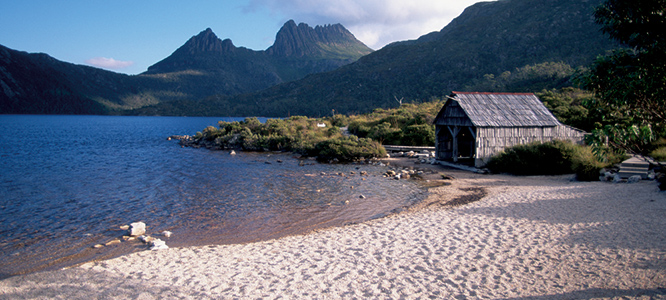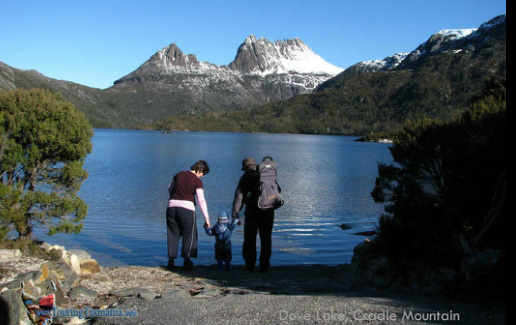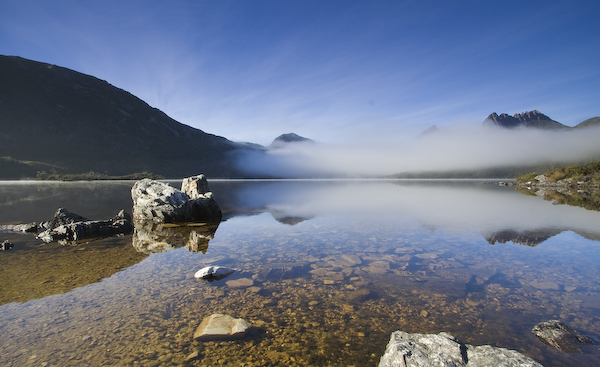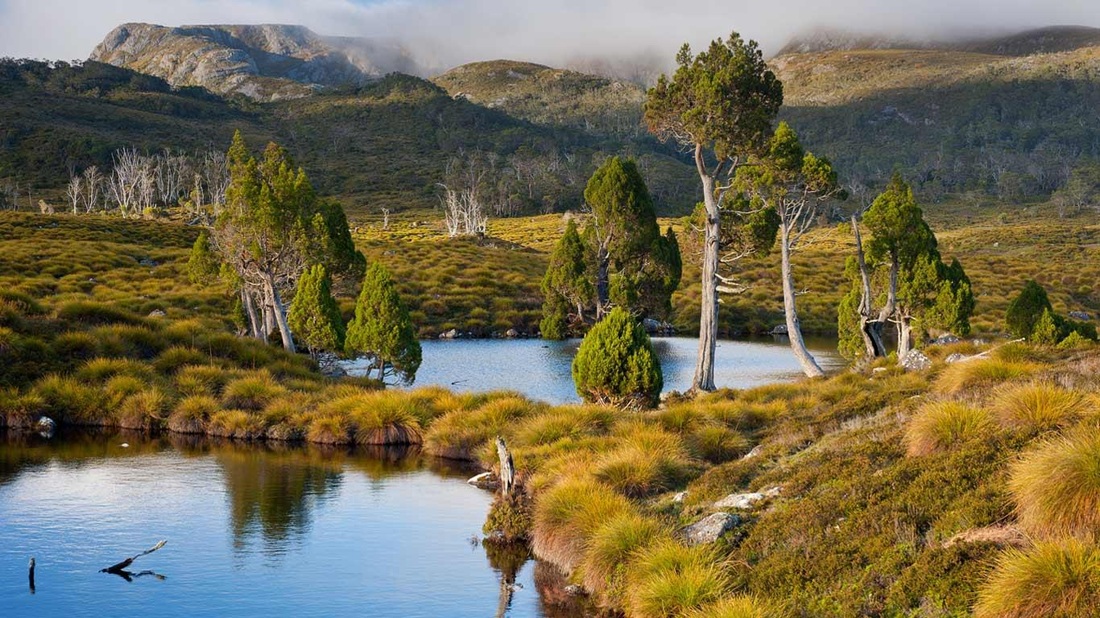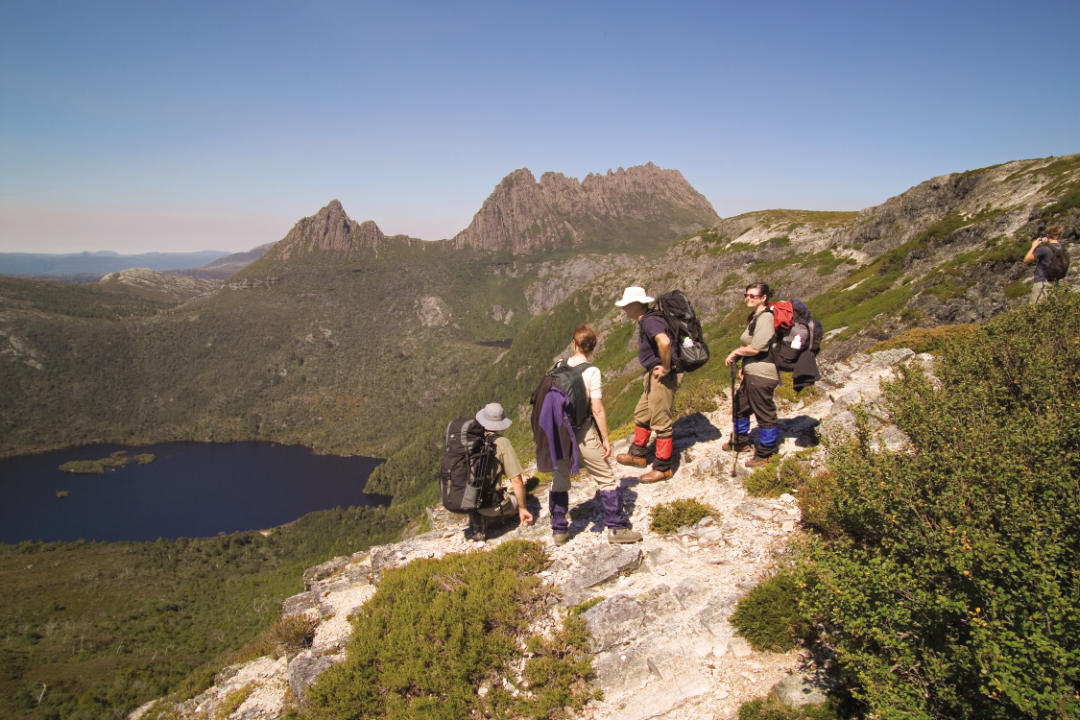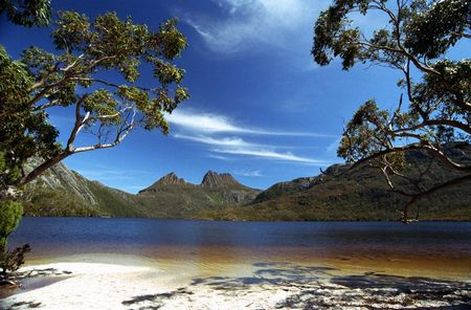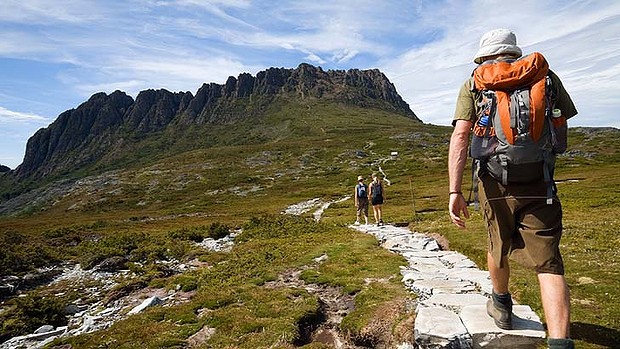Cradle Mountain
|
Cradle Mountain was named in 1827 by the explorer Joseph Fossey who decided it bore a remarkable similarity to a cradle. It was first climbed by a European in 1831 when the explorer Henry Hellyer successfully reached the summit.
Surveyor General George Franklin passed through the area in 1835 and he was duly followed by prospectors, trappers and settlers. As early as the 1890s there was some tourism in the area. Governor Hamilton had a house and boat shed built for visitors on Lake St Clair. The man remembered as the founding father of tourism in the area was the Austrian born naturalist Gustaf Weindorfer who, in 1911, bought land in Cradle Valley where he built 'Waldheim' which he opened to guests who wanted to explore the region. When his wife died, Weindorfer moved to Cradle Valley permanently. He died in 1932 and is buried near 'Waldheim'. Weindorfer is credited with naming Lake Dove, Crater Lake and Hansons Lake. He named Mount Kate after his wife. Reservation of land began in 1922 when an area from Cradle Mountain to Lake St Clair was set aside as a 'scenic reserve and wildlife sanctuary'. In 1927, Cradle Mountain was set aside as a reserve, known as 'The Reserve' to generations of bushwalkers the area was eventually enlarged to 124,942 ha. It became a National Park in 1971, one of the most accessible and interesting attractions in Tasmania. |
